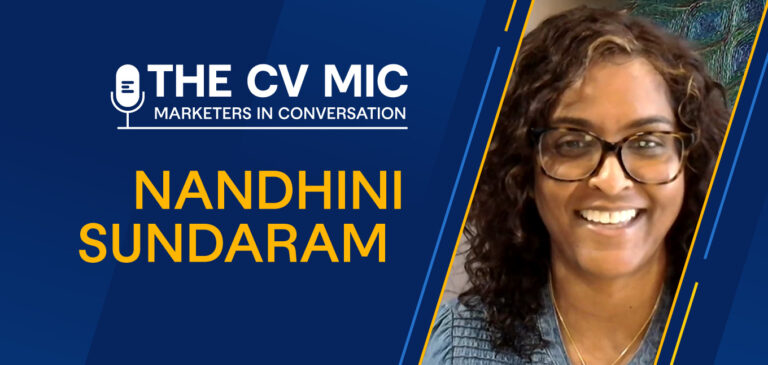As a business owner, you might wonder, “Are content marketing and digital marketing the same thing?” Though novice marketers think they’re interchangeable, they cannot be compared like apples and oranges.
Confused yet?
Let’s elaborate on content marketing vs. digital marketing, and how these interwoven marketing topics work hand-in-hand to improve your brand’s share of voice, conversions, and customer retention. We’ll start by covering the basics of each term, then dive into their differences and how they can work in harmony.
Let’s dig in…
Definition of content marketing
The goal of content marketing is to establish trust and rapport with your audience or end-users through engaging content.
ClearVoice talent Britt Skrabanek defines content marketing as:
“Content marketing is a conversation that leads to credibility. Through the exchange of information, your brand builds trust with your audience by enriching the conversation. You provide something of value in exchange for their attention. When you consistently create and share educational and meaningful content, over time, you will attract, engage, and convert your intended audience.”
There are numerous types of content you can create. Years ago, brands started out with basic text-based content. Today, while text-based content is a main avenue to promote your brand, other types of content are audio (podcasts) and visual (video-based) content.
No matter the type of content you create, your content should always align with buyer journey stages:
- Educate/Top-of-Funnel (ToFu): This is content that supports education, like blog and social media posts, checklists, customer nurturing email or SMS campaigns, infographics, tutorial videos, and press releases.
- Consider/Middle-of-Funnel (MoFu): This is content that sparks curiosity to find the best product or service in a particular category or industry, like case studies, customer videos, client testimonials, expert ebooks, product reviews, product comparisons, lead nurturing email campaigns, and product-focused podcast or videos.
- Decide/Bottom-of-Funnel (BoFu): This is content that sways a purchase decision, like a product demo or trial, ROI calculator, implementation guide, pricing sheet, fact sheet, or frequently asked questions webpage.
- Delight/Beyond the Funnel (BeFu): This is content that gives your current customers or clients a warm hug by reinforcing their decision to select your product or service, like customer success and feature-focused webinars, community forums, consumer surveys, and thought-leadership-focused blog posts.
Remember: You don’t need to produce every type of content to make an impact. Start with a few content types that support your brand’s goals, and offer relevance and usefulness to your target audience.
Definition of digital marketing
Now that we’ve covered the definition of content marketing, let’s dig into the definition of digital marketing. Digital marketing encompasses the full “solar system” of online advertising and marketing through channels like your website, email, mobile devices, search engines, and social media channels. It encompasses both paid and organic digital tactics — with the same goal of attracting, converting, and retaining customers.
Need more examples of digital marketing? Here’s a full list to wrap your head around:
- Affiliate Marketing
- Content Marketing
- Email Marketing
- Marketing Automation
- Mobile (SMS) Marketing
- Native Advertising
- Online Public Relations
- Pay Per Click (PPC)
- Search Engine Marketing (SEM)
- Search Engine Optimization (SEO)
- Social Media (Organic and Paid)
Many brands lean to digital marketing because it tends to be more cost-effective than traditional (non-digital) marketing and also helps target your ideal audience.
Content marketing vs. digital marketing — how are they similar/different?
After seeing the definition of content marketing, you’ve probably already visualized a sketch of a Venn diagram of content marketing vs. digital marketing in your head. But if you need more direction, here’s a summary of their inherent differences:
Content marketing is a valuable digital marketing tactic, while digital marketing is a catch-all term covering the ways to market using the internet. They can co-exist in harmony because they have the same goals: to educate, attract, convert, and retain audiences.
Food for thought — executing content marketing and digital marketing in harmony
Part of the complementary aspect of digital marketing and content marketing is their given time frame. Content marketing is slow burn.
It doesn’t produce an immediate conversion, it’s a long-haul money-maker. This is for two reasons:
- The content creation process can be involved and requires a special skill set from expert content creators.
- User-friendly and informative content is a hallmark of high organic search rankings — but it can take time for Google to acknowledge and rank the new content.
In contrast, many digital marketing tactics, namely online advertising (like PPC, social ads, display ads) produce immediate results and drive an action upon first impression. So, using content marketing with supporting digital marketing tactics helps reach potential customers at many points of their customer journey, fortifying your brand’s digital impact.
How to create a complementary strategy with content marketing and digital marketing
Creating a strategy with both content and other digital tactics requires a solid blueprint. Start by using a master strategy document that outlines the following elements:
- Company mission
- Marketing goals (short- and/or long-term)
- Target audience(s)
- Key performance indicators (KPIs)
- Budget/resources
- Marketing tactics
- Timeline
Final thoughts on content marketing vs. digital marketing
Now that we’ve laid out content marketing vs. digital marketing, you can create a plan and put it to action using a complementary approach to both. (Remember: don’t focus narrowly on one approach to attracting, hooking, and sinking new customers!)
If you need help rounding out your content creation resources, let ClearVoice be your go-to. Take a look at our freelance network chock-full of strategists, editors, writers, proofreaders, graphic designers, and even videographers.
Learn more about the managed content creation process and how it can benefit your brand.







